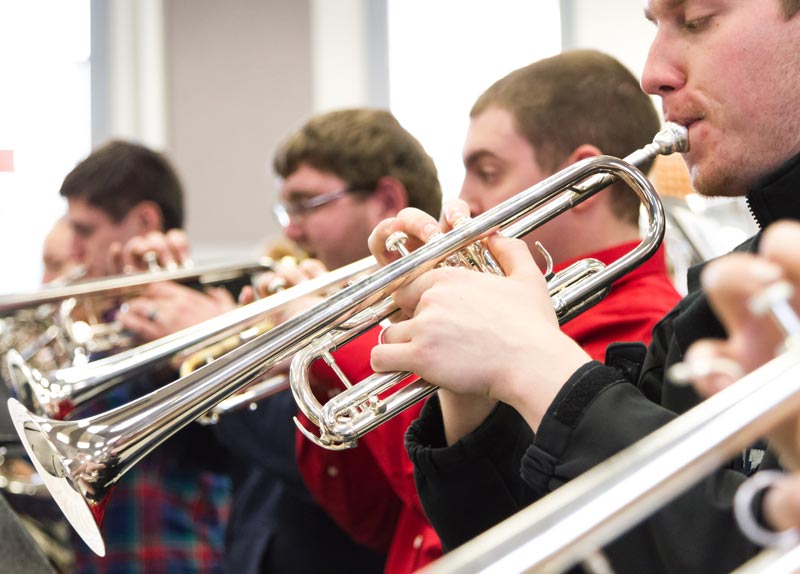Artist Statement:
For Heart of a Forest I wanted to explore how to remix some of the ways we think about traditional forms of music versus digital interpretation of nature. Is a landscape a portrait? Is a composition a portrait? These are questions left lingering over the entire project. Thoreau once went to the forests of New England to write his seminal works. He wrote of the experience “I went to the woods because I wished to live deliberately, to confront only the essential facts of life, and see if I could not learn what it had to teach, and not, when I came to die, discover that I had not lived.” I think that we need music to catalyze how we can rethink our relationship to Nature, and I am inspired by Thoreau and the collision of data, sound, and new ways to think of the absence of “origins” – no one owns the forest and the sounds that it inspires. It’s all a mirror of what is possible in our hyper interconnected world. Like the roots of the trees underneath the forest. It is all connected, and we all contribute to the elements that make it evolve. All is connected.
http://liberalarts.oregonstate.edu/ feature-story/may-18-forest-symphony

Profile piece with OSU Symphony:
DJ Spooky at Oregon State University (Preview)
View The Heart of a Forest Symphony
Hear DJ Spooky Interview on Talk Out Loud – Public Radio with David Blanchard
// LISTEN HERE
Heart of a Forest
with the Oregon State University Wind Ensemble
Wednesday, May 18 2016 at 7:30 p.m.
LaSells Stewart Center (875 SW 26th Street in Corvallis).
Composer, artist, and author Paul Miller debuted his latest composition, Heart of a Forest, on Wednesday, May 18th. True to Miller’s genre-bending style, this world debut included Dr. Christopher Chapman, director of bands at OSU, conducting the OSU Wind Ensemble while Miller mixed electronic music and images of the forest.
Without This Place: A Glimpse of the HJ Andrews Experimental Forest

Heart of a Forest is a project that envisions a composers response to how art and music can interact with science and nature. After four artist residencies at the HJ Andrews Experimental Forest in the Cascade Range over a period to interact with the forest under radically different seasons, DJ Spooky wrote a remix project based on personal interaction with the different seasons and a lyrical sense of how seasons can change one’s relationship with time, space, and place. The DJ Spooky-HJ Andrews Experimental Forest artist residency is part of the Spring Creek Project’s Long-Term Ecological Reflections program, which invites writers and artists to interact with environmental scientists, explore the forest, and write or create art. The program, in its twelfth year, is designed to collect reflections on the forest for the next two hundred years.
Forests. We take them for granted, but they represent some of the most complex phenomena on the planet. Over the years, the area under forest cover has decreased steadily, as forests have been cleared for agriculture, industry, housing, and other development activities like the construction of roads, railways, and hydroelectric plants. The question that this asks of artists is profound: how to catalyze a response against this phenomena and create new ways of seeing the process as something that can be stopped. Heart of a Forest is a composite of classical music and electronic music that envisions a new direction in the battle to bring better awareness to the plight of forests worldwide.
From the beginning of civilization, from when human beings began to cultivate land in the Indus Valley and other regions of the world, the shift from nomadic to settlement based patterns of living has put humanity in direct conflict with the patterns of growth and renewal in Nature. In recent years, according to the According to the United Nations’s Food and Agriculture Organization, overall tropical deforestation rates this decade are 8.5 percent higher than during the 1990s, and other parts of the worlds forests mirror that urgency. Forests cover around 31 percent of the world’s land surface, just over 4 billion hectares. (One hectare = 2.47 acres.) This is down from the pre-industrial area of 5.9 billion hectares and decreasing rapidly. The arts have a profound relationship with how people perceive the world.
Overall, deforestation has been taking place at a pace of about 130 000 km2 (13 million hectares) per year during the period 1990–2005 (an area the size of Greece), with few signs of a significant decrease over time. Deforestation continues at a breathtakingly fast rate, but the annual net loss of forest area is decreasing due to tree planting and natural expansion of forests in some countries and regions. In another way of showing these effects imagine this: Data from the University of Maryland and Google shows that the world lost 2.3 million square kilometers of tree cover between 2000 and 2012—the equivalent of losing 50 soccer fields’ worth of forests every minute of every day for the past 13 years! By contrast, only 0.8 million square kilometers have regrown, been planted, or restored during the same period. www.wri.org/blog/2014/02/9-maps-explain-worlds-forests
The net effect is that with better information and ideas, we can stop the process of deforestation. In conjunction with HJ Andrews Experimental Forest, a special collaboration has taken form that highlights how art can take part in that change. Dj Spooky asks: how would that change appear as a composer approaches the idea of sound, art, and data as his compositional material.





